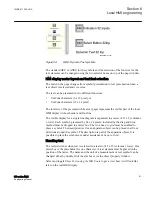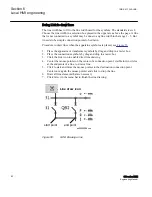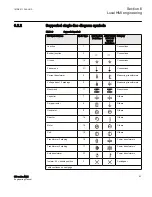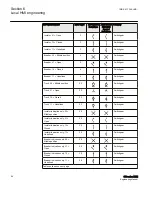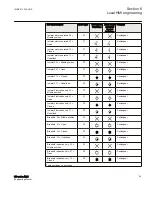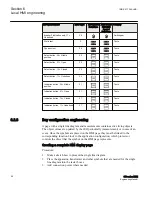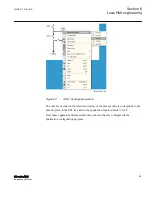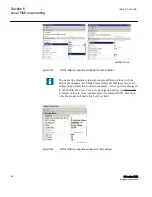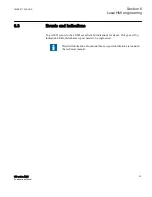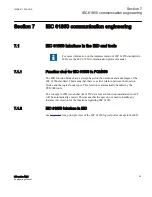
the telegram by its source address and will read the telegram and deals with it. The
telegrams are multicast sent and not acknowledged by the receiver.
en05000830.vsd
IED 3
S
en
d
Data-set
R
ec
ei
ve
R
ec
ei
ve
LN
LN
LN
LN
LN
IED 2
S
en
d
Data-set
R
ec
ei
ve
R
ec
ei
ve
LN
LN
LN
LN
IED 1
S
en
d
Data-set
R
ec
ei
ve
R
ec
ei
ve
LN
LN
LN
LN
LN
LN
IEC 61850 Subnetwork
IEC05000830 V1 EN
Figure 61:
IEC 61850: Horizontal communication principle
shows an example with three IEDs where each one communicates with all
the others.
When a GOOSE message is to be sent, is defined by configuring the data set with the
defined trigger option and the GOOSE control block (GoCB). This engineering process
is done in a station configuration tool, for example CCT600. The task involves
configuring lists with the signal, value and quality (data attributes) that belong to the
GOOSE message dataset.
In the opposite direction the standard only defines the IED as a receiver of the GOOSE
message. How the GOOSE input signals are handled must be defined in the IED
application configuration. The SCD file generated by CCT600 (or any other station
configuration tool) contains these GOOSE data sets as input data. The input data must
be connected to a GOOSE receive function block (GOOSEBINRCV,
GOOSEINTLKRCV, GOOSESPRCV, GOOSEDPRCV, GOOSEINTRCV or
GOOSEMVRCV) in SMT.
7.1.3
Station configuration description file types
The IEC 61850 standard defines SCL-file types in the sequence of engineering. These
files have a different definition, which is explained in IEC 61850–6. Three of these file
types are used in the engineering process for an IED.
1MRK 511 245-UUS -
Section 7
IEC 61850 communication engineering
650 series ANSI
95
Engineering Manual

